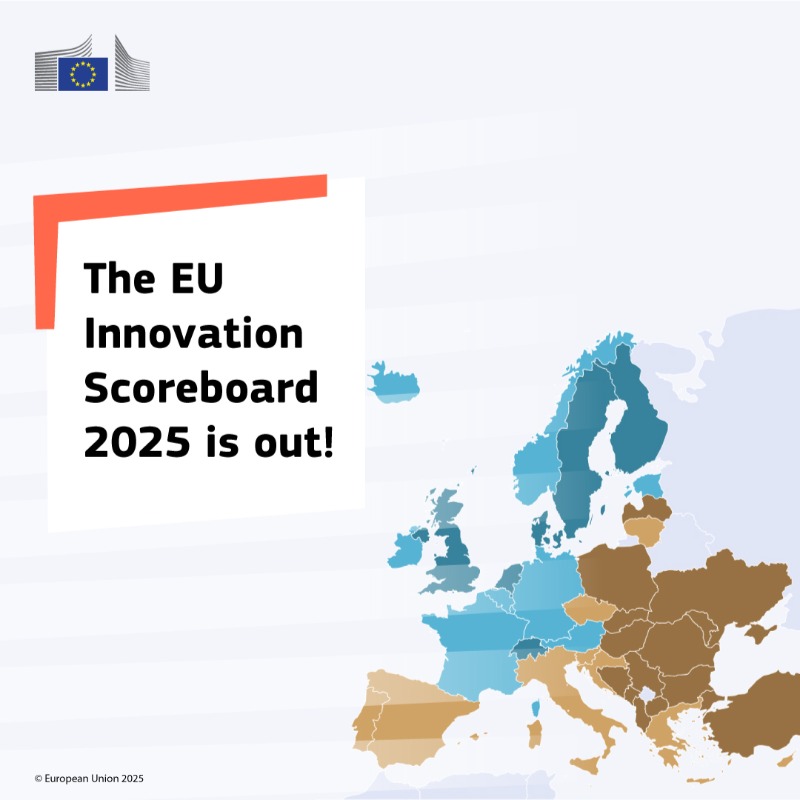
The European Innovation Scoreboard 2025 offers an insightful analysis of innovation systems across Europe, highlighting both progress and persistent disparities between countries. Southeast Europe – including Slovenia, Croatia, Bosnia and Herzegovina, Montenegro, Serbia, and North Macedonia – demonstrates significant diversity in innovation capacity and performance.
Below is a concise comparison of these six countries, emphasizing their relative positions within the European innovation landscape.
Slovenia – The Regional Innovation Leader
Among the countries of Southeast Europe, Slovenia stands out as the strongest performer. Classified as a Strong Innovator, Slovenia continues to outperform the EU average in several key areas:
- Human Resources: High levels of tertiary education attainment and a steady increase in new doctoral graduates.
- Attractive Research Systems: International scientific co-publications and strong collaboration networks with EU partners.
- Firm Investments: Above-average business R&D expenditure as a share of GDP.
- Innovators: A high proportion of SMEs introducing product and process innovations.
Slovenia has made substantial progress in digitalisation and green innovation, although challenges remain in translating R&D investments into higher employment in innovative sectors.
Croatia – Moderate Innovator with Upward Trends
Croatia belongs to the Moderate Innovators group, performing at around 70–90% of the EU average innovation score.
Key strengths include:
- An improving innovation-friendly environment, with increasing broadband penetration and digital skills.
- Growing numbers of innovative SMEs collaborating with others.
- Access to EU funding supporting research infrastructure and start-ups.
Nevertheless, Croatia still faces constraints, notably in business R&D spending and the commercialisation of research outputs.
Serbia – Moderate Innovator with High Growth Potential
Serbia has also achieved the status of a Moderate Innovator, demonstrating one of the fastest growth rates in innovation performance in the region over the past decade.
Highlights:
- Dynamic start-up ecosystem and rising participation in Horizon Europe projects.
- Improvements in intellectual assets, including patent applications and trademarks.
- Increasing investments in R&D relative to GDP.
However, Serbia continues to experience challenges in translating innovation into broader economic impact, particularly in employment and high-tech exports.
North Macedonia – Emerging Innovator Making Progress
North Macedonia is categorised as an Emerging Innovator, performing at approximately 50–70% of the EU average.
Strengths include:
- Innovators among SMEs, showing growing adoption of new products and processes.
- International linkages, with more co-publications and participation in EU programmes.
- Efforts to strengthen the innovation support ecosystem.
Persistent weaknesses are observed in public R&D funding, venture capital availability, and innovation outcomes in employment.
Montenegro – Emerging Innovator with Structural Challenges
Montenegro remains an Emerging Innovator, with performance around or below 50% of the EU average.
Positive aspects:
- Commitment to aligning research policies with EU standards.
- Ongoing improvements in digitalisation indicators.
Nevertheless, Montenegro faces systemic constraints:
- Low R&D intensity across public and private sectors.
- Limited collaboration between science and industry.
- Few high-tech exports and patents.
Bosnia and Herzegovina – Emerging Innovator Lagging Behind
Bosnia and Herzegovina is also in the Emerging Innovator category, with one of the lowest scores in Southeast Europe.
Key observations:
- Modest progress in building innovation infrastructure and support institutions.
- Gradual improvements in human capital and research cooperation.
- Critical weaknesses remain in innovation funding, R&D investment, and the capacity of firms to innovate.
Comparative Summary Table
| Country | Innovation Group | Key Strengths | Main Challenges |
| Slovenia | Strong Innovator | Human resources, R&D investment, SMEs innovating | Employment impact, innovation diffusion |
| Croatia | Moderate Innovator | Digitalisation, SME collaboration, EU funding | Business R&D, commercialisation |
| Serbia | Moderate Innovator | Start-ups, patents, R&D growth | Economic impact, high-tech exports |
| North Macedonia | Emerging Innovator | SME innovation, EU linkages | Funding, venture capital, employment outcomes |
| Montenegro | Emerging Innovator | Digital progress, policy alignment | R&D intensity, science-business collaboration |
| Bosnia and Herzegovina | Emerging Innovator | Human capital improvements | Funding, firm-level innovation, patents |
Edina Babnik, Enterprise Europe Network – Slovenia


